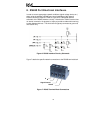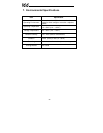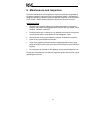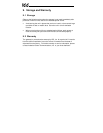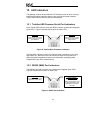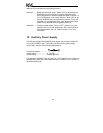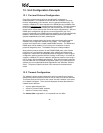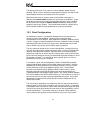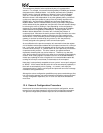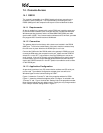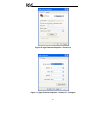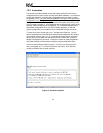
26
13. Unit Configuration Concepts
13.1 Port and Protocol Configuration
Each of the communication ports can be individually configured or
enabled/disabled. It is important to note that with one exception, the ports
function independently of one another, and can operate simultaneously. For
example, a Modbus RTU slave request on the RS485 port and a Modbus Plus
request can simultaneously
access the same internal point. The sole exception
to this functionality is that the RS485 port and the ASD1 port are internally
shared, which means that they both cannot be active simultaneously. Also, the
RS485 port’s configuration has priority over that of the ASD1 port: if any
protocol is assigned to the RS485 port, then the ASD1 port will be automatically
disabled. Note, however, that the ASD2 and ASD3 ports will at all times
operate independently of all other network ports.
Although each communication port can be configured via the serial console
interface, their configuration selections vary slightly. The Toshiba ASD
common serial ports have a simple enable/disable selection. The RS232 and
RS485 ports can be disabled, or can have one of a selection of control
protocols assigned to them. The Modbus Plus port is always enabled.
Along with the protocol selection for the RS232/RS485 ports, each of these
ports also has a corresponding baudrate, parity, address and timeout time
assignment. Note that not all assignable protocols support the same range of
configuration options: therefore be sure to assign a valid entry in all cases (for
example, a Modbus RTU slave’s “address” assignment must be in the range 1-
247 to comply with the Modbus specification). Also note that certain protocols
may not make use of all available configuration options (e.g. certain protocols
operate only at one specified baudrate regardless of the “baudrate” selection
value). The protocol-specific sections of this manual will document these
cases.
13.2 Timeout Configuration
The gateway’s points can be configured to perform a specific set of actions
when primary communications are lost on one or more of its various networks.
This allows each point to have its own unique “fail-safe” condition in the event
of a network interruption. There are three separate elements that define the
network timeout behavior:
• A port’s network timeout time
• A point’s “Timeout Enable” selection
• A point’s “Timeout Value” setting
The timeout time is adjustable in 1s increments from 0 to 500s.




